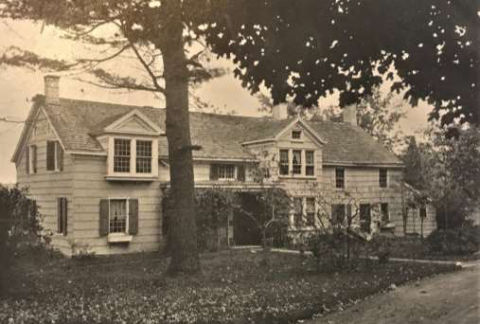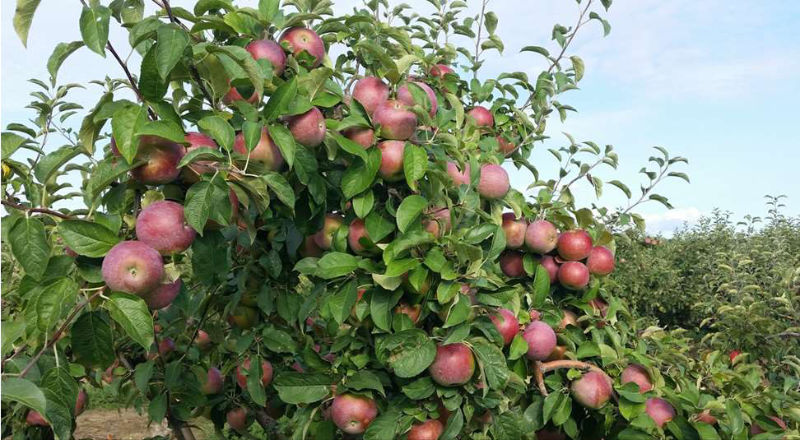Youngs Family History
Youngs Memorial Cemetery has been a burial ground since 1658. The Reverend John Youngs and his family arrived on Long Island by ship from New Haven, Connecticut, and settled in the town of Southhold in 1640. He established the first English church in the state of New York. His second son, Thomas Youngs, traveled west to establish a homestead. He built the home directly across the street from the cemetery, on the corner of Cove Road and Cove Neck Road, around 1650. He was the first to establish a homestead in the area, which was certainly a wilderness, shared with Long Island’s Native Americans. The original portion of the Youngs Homestead is the oldest surviving structure in Oyster Bay, possibly the oldest in the county.
Thomas Youngs was a farmer. He immediately set about planting the apple tree seedlings he had brought with him. His first harvest was in 1670. The Youngs apple orchard continued growing over the decades, totaling 27,133 trees. In 1768, the farm won an award of 10 pounds sterling for the largest nursery of apple trees in New York State.
His original cider mill was in operation for over a century making cider, vinegar, and applejack whiskey. Over the years, the Youngs family added numerous homes and other buildings as the farm grew. Other structures included a boathouse, shoemaker shop, corn crib, carpenter shop, blacksmith shop, smokehouse, ice house, barns, a general store, and a church.

A short distance from the cemetery, the family built the first schoolhouse in Oyster Bay sometime before the Revolutionary War. They hired a teacher, and the school was open to any children wishing to attend. This Cove School taught both estate owners and servants’ children together. The school continued into the 20th century.
The Youngs family favored this hillside location for their cemetery site across from the Homestead. Many generations of the Youngs family and their enslaved servants are buried there. Most slaveholders in the eighteenth century buried their enslaved in separate plots well away from the family plots.
On April 23, 1790, President George Washington paid an overnight visit to the Homestead to visit with Captain Daniel Youngs on his tour of Long Island after the Revolutionary War. Captain Youngs was a loyalist and pro-British during the Revolutionary War. Many farmers were forced to obey the loyalist cause to save their farms and families. Some historians believe that Daniel may have been a Washington spy, like Robert Townsend of Raynham Hall. Others conclude that Washington just looked for the best homes in which to stay. During the visit, it is rumored that Daniel Youngs’ eighteen-year-old daughter, Kezia, was favored with a hearty kiss on the cheek by the president and vowed that she would never let anyone else kiss her on the cheek again. A mural of his visit to the Youngs’ home can be seen in the Oyster Bay Post Office and the Nassau County Courthouse Building.

The Homestead housed nine successive generations of the Youngs family through 1929. The last was Judge William Youngs, once Queens County District Attorney and later private secretary to Theodore Roosevelt. T.R. admired the Cemetery’s location and had asked Billy if he could be buried there, and of course, Billy and the family agreed. President Roosevelt died at Sagamore Hill and was buried in the Cemetery on January 8, 1919. As T.R. was the 26th president, it takes 26 steps by the hillside to reach his gravesite. Roosevelt purchased the 155 acres of land for his beloved Sagamore Hill from the Youngs Family after graduating from Harvard in 1880.
Judge William Youngs’ only daughter, Mary Fanny Youngs, wrote a book, “When We Were Little,” in 1919. It is a lovely rendition of her memories of growing up in Oyster Bay and at the Homestead’s busy farm. The book of thirty-eight poems immerses the reader in cozy images of her life, including ginger cakes, gathering strawberries, shelling peas, and sliding down the roof.
By Paula Youngs Weir
Youngs Farm, Old Brookville
Paula continues the family tradition of farming. Paula is the fourth generation farming at the Old Brookville location. Her great grandfather John Youngs married Ida Hegeman in 1893.



